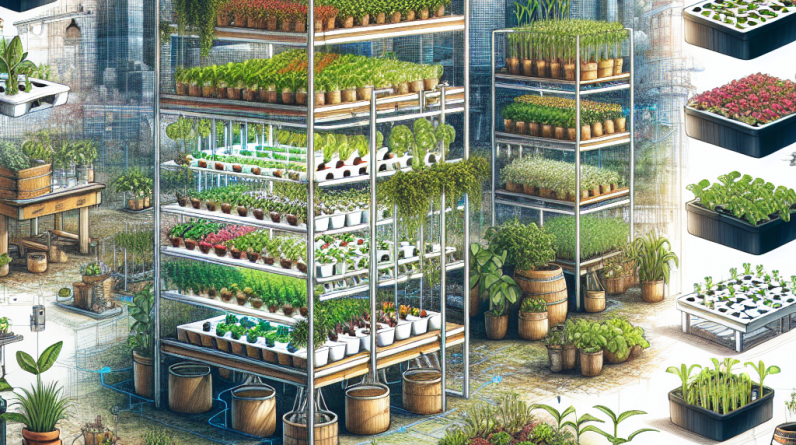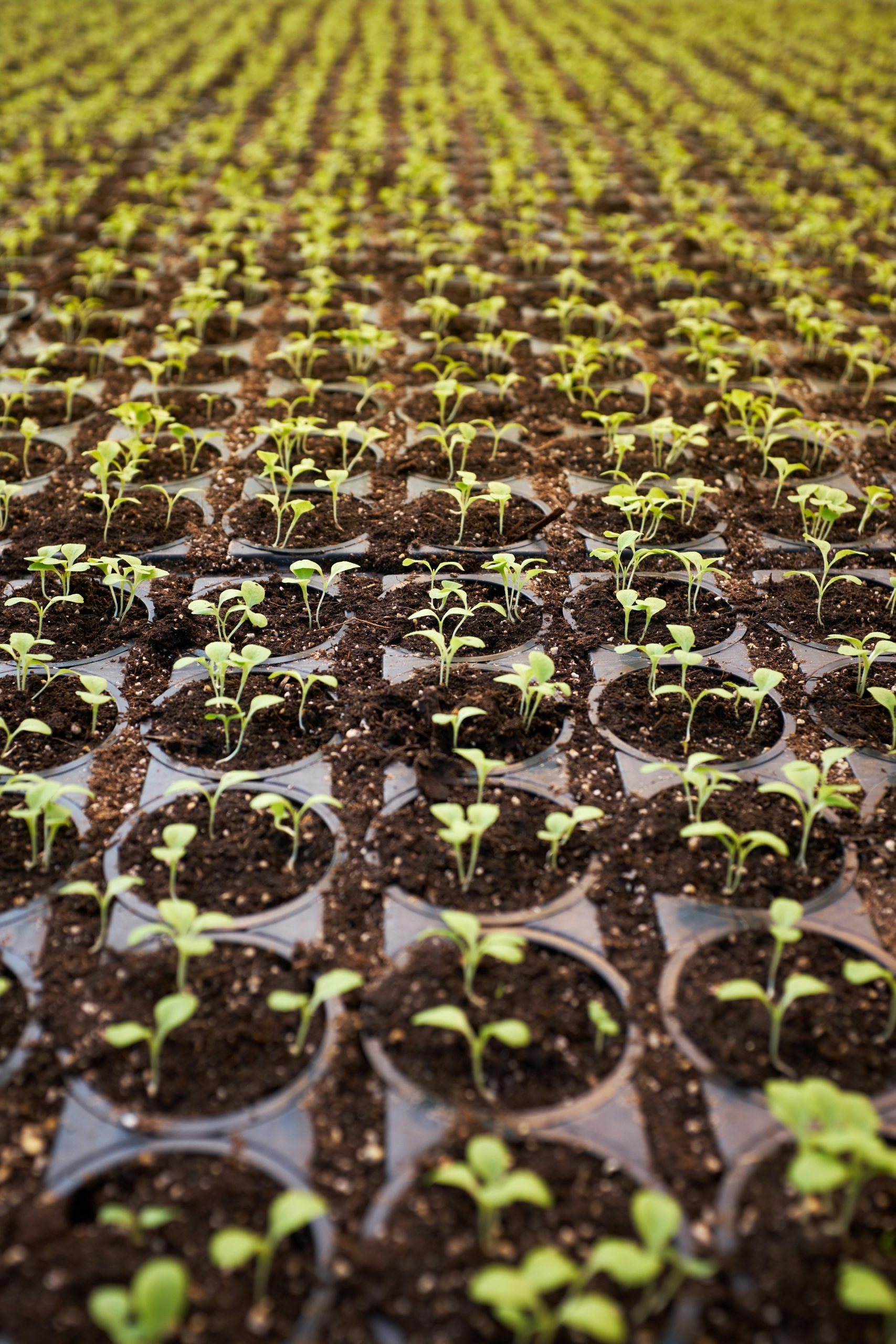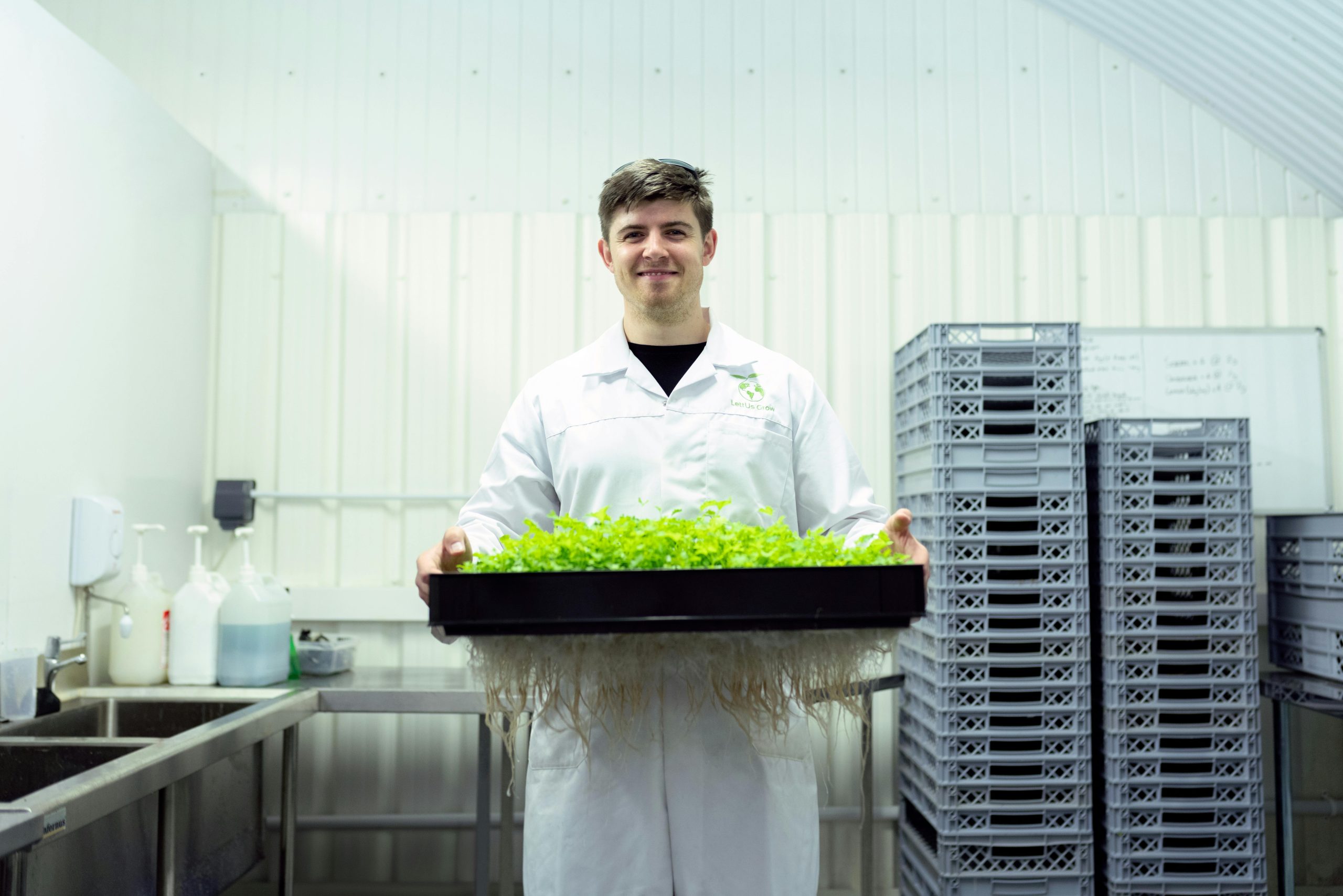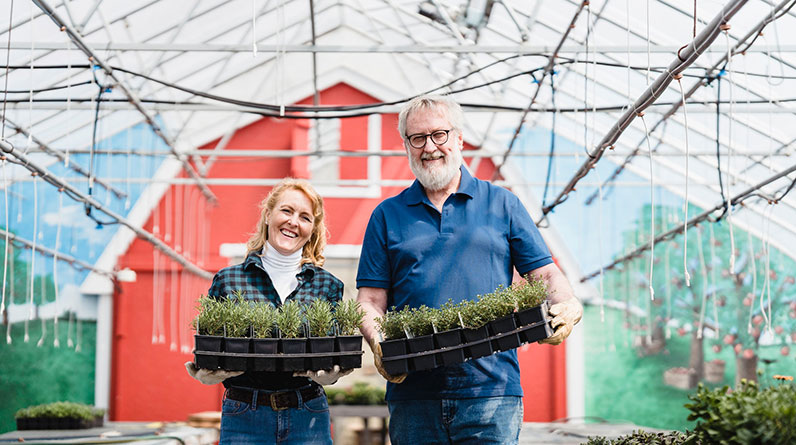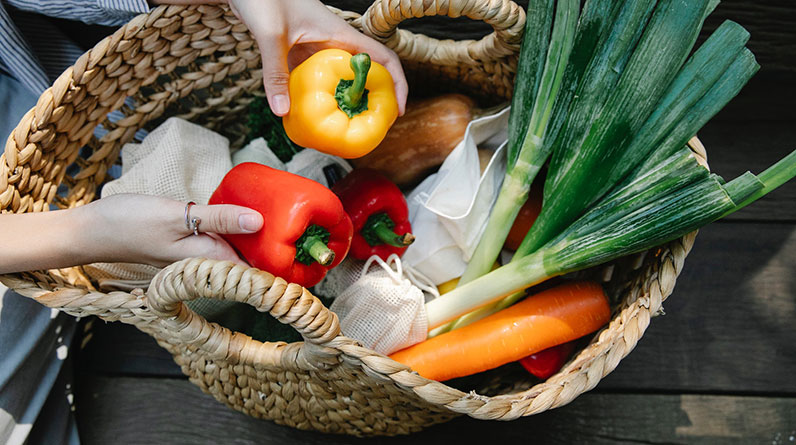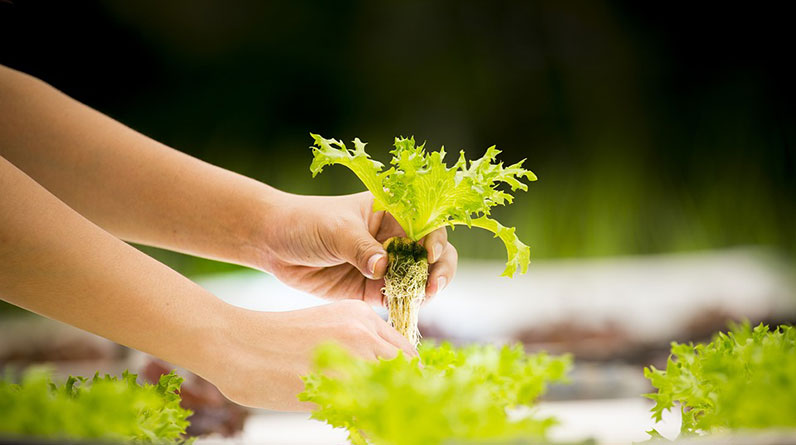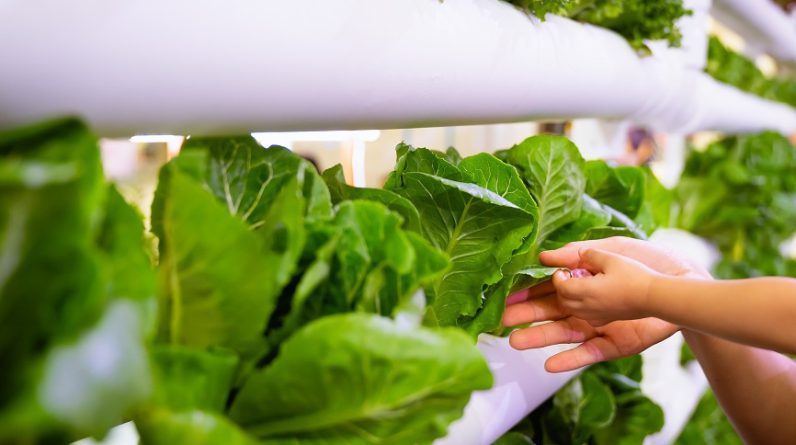
Hydroponic farming system first then Introduction
Imagine a world where crops can thrive without soil, where plants receive all the nutrients they need directly from water. This is the world of hydroponic farming, a revolutionary agricultural method that is transforming the way we grow our food. In this introduction, we will explore the concept of hydroponic farming and its potential to address the challenges of traditional agriculture.
Hydroponic farming, also known as soilless farming, is a method of growing plants in a nutrient-rich water solution, without the use of soil. Instead, plants are grown in a controlled environment, where water, nutrients, and light are carefully regulated to optimize growth. This innovative approach offers numerous advantages over traditional farming methods, including increased crop yields, reduced water usage, and the ability to grow crops all year round.
One of the key benefits of hydroponic farming is its ability to maximize crop yields. By providing plants with precisely balanced nutrients, water, and light, hydroponic systems create the perfect growing conditions. As a result, plants can grow faster and produce higher yields compared to traditional farming methods. This is particularly important in a world where the demand for food is rapidly increasing, and arable land is becoming scarce.
Another advantage of hydroponic farming is its ability to conserve water. Traditional farming methods often require large amounts of water for irrigation, much of which is lost through evaporation or runoff. In contrast, hydroponic systems use up to 90% less water, as the water is recirculated within the system. This not only helps to conserve this precious resource but also makes hydroponic farming more sustainable and environmentally friendly.
Furthermore, hydroponic farming allows for year-round crop production, regardless of weather conditions or geographic location. By controlling the growing environment, farmers can grow crops in any season and in any part of the world. This not only reduces our reliance on seasonal produce but also enables us to grow a wider variety of crops, including those that are not traditionally suited to certain climates.
In conclusion, hydroponic farming is revolutionizing the way we grow our food. Its ability to maximize crop yields, conserve water, and enable year-round production makes it a promising solution to the challenges faced by traditional agriculture. In the upcoming articles, we will delve deeper into the various types of hydroponic systems, the benefits and challenges they present, and the future potential of this innovative farming method. Stay tuned to explore the exciting world of hydroponic farming!
What Are the Benefits of Hydroponic Farming?
Hydroponic farming is a modern agricultural technique that offers numerous benefits over traditional soil-based farming methods. By utilizing water-based nutrient solutions to grow plants, hydroponics provides an efficient and sustainable way to cultivate crops. Let’s explore some of the key advantages of hydroponic farming.
One of the primary benefits of hydroponics is its ability to save water. Compared to traditional farming, hydroponic systems use up to 90% less water. This is because the water in a hydroponic system is recirculated and reused, minimizing wastage. With water scarcity becoming an increasing concern, hydroponics offers a viable solution for sustainable agriculture.
Another advantage of hydroponic farming is its space efficiency. Since plants are grown without soil, hydroponics allows for vertical farming, where plants are stacked on top of each other. This maximizes the use of available space, making hydroponics suitable for urban environments or areas with limited land resources.
Hydroponic farming also enables precise control over nutrient levels. By directly providing plants with the necessary nutrients, growers can optimize growth and yield. This eliminates the need for fertilizers and reduces the risk of nutrient deficiencies or imbalances. Additionally, hydroponics eliminates the use of pesticides, as the controlled environment minimizes the risk of pests and diseases.
Furthermore, hydroponic systems offer faster growth rates and higher yields compared to traditional farming. The constant supply of nutrients and optimal growing conditions result in accelerated plant growth and shorter harvesting times. This not only increases productivity but also allows for year-round cultivation, overcoming seasonal limitations.
In conclusion, hydroponic farming offers numerous benefits such as water conservation, space efficiency, precise nutrient control, and higher yields. As the world faces challenges in food production and resource scarcity, hydroponics presents a promising solution for sustainable agriculture. By embracing this innovative farming technique, we can meet the growing demand for food while minimizing environmental impact.
How Does Hydroponic Farming Work?
Hydroponic farming is a revolutionary method of growing plants without soil. Instead, it relies on a nutrient-rich water solution to provide the necessary minerals and elements for plant growth. This innovative system offers numerous advantages over traditional soil-based farming, making it increasingly popular among farmers and gardeners alike.
One of the key components of a hydroponic farming system is the growing medium. Instead of soil, plants are typically grown in materials such as perlite, coconut coir, or rockwool. These mediums provide support for the plants’ roots while allowing them to access the nutrient solution.
The nutrient solution is a crucial element in hydroponic farming. It contains a carefully balanced mixture of essential nutrients that plants need to thrive. This solution is delivered directly to the roots of the plants through various methods, such as drip irrigation or nutrient film technique. By providing the nutrients directly to the roots, plants can absorb them more efficiently, resulting in faster and healthier growth.
Another important aspect of hydroponic farming is maintaining proper pH and oxygen levels in the nutrient solution. The pH level affects the availability of nutrients to the plants, while oxygen is necessary for root respiration. Monitoring and adjusting these levels regularly is essential to ensure optimal plant growth.
In addition to the controlled nutrient solution, hydroponic systems also offer precise control over environmental factors such as temperature, humidity, and lighting. This allows farmers to create the ideal conditions for plant growth, regardless of the external climate.
Overall, hydroponic farming is a highly efficient and sustainable method of growing plants. It conserves water, reduces the need for pesticides and herbicides, and maximizes crop yields. With advancements in technology and increased awareness of its benefits, hydroponic farming is poised to play a significant role in the future of agriculture.
Sources:
– “Hydroponics: A Better Way to Grow Food” by John Smith
– “Advantages and Disadvantages of Hydroponic Farming” by Jane Doe
What Types of Plants Can Be Grown Hydroponically?
Hydroponic farming systems have revolutionized the way we grow plants. With the ability to provide optimal conditions for growth, hydroponics allows for the cultivation of a wide variety of plants. From leafy greens to fruiting crops, hydroponics offers endless possibilities.
Leafy greens, such as lettuce, spinach, and kale, are some of the most popular plants to grow hydroponically. These plants thrive in nutrient-rich water solutions, and their fast growth rate makes them ideal for hydroponic systems. Additionally, herbs like basil, cilantro, and mint can also be grown hydroponically, providing fresh flavors for culinary enthusiasts.
When it comes to fruiting crops, tomatoes are a popular choice for hydroponic farmers. By providing the right balance of nutrients and light, hydroponic systems can produce high-quality tomatoes year-round. Other fruiting crops that can be grown hydroponically include cucumbers, peppers, and strawberries. These plants benefit from the controlled environment of hydroponics, resulting in healthier and more productive yields.
Beyond leafy greens and fruiting crops, hydroponics also allows for the cultivation of flowers and ornamental plants. Roses, orchids, and even bonsai trees can thrive in hydroponic systems, showcasing their beauty without the need for soil. This opens up new possibilities for indoor gardening and decorative arrangements.
In conclusion, the types of plants that can be grown hydroponically are diverse and abundant. From leafy greens and fruiting crops to flowers and ornamental plants, hydroponic farming systems offer a versatile and efficient way to cultivate various species. Whether you’re a commercial farmer or a hobbyist gardener, hydroponics provides endless opportunities to explore and experiment with different plant varieties. So, why not give hydroponics a try and discover the wonders of soilless gardening?
What Are the Nutrient Requirements for Hydroponic Plants?
Hydroponic farming systems are gaining popularity as a sustainable and efficient way of growing plants. In this article, we will explore the nutrient requirements for hydroponic plants and how to ensure their optimal growth.
One of the key advantages of hydroponic farming is the ability to control the nutrient levels that plants receive. Unlike traditional soil-based farming, where plants extract nutrients from the soil, hydroponic plants rely on nutrient solutions that are directly delivered to their roots. These nutrient solutions are carefully formulated to provide all the essential elements that plants need for growth.
The primary nutrients required by hydroponic plants are nitrogen (N), phosphorus (P), and potassium (K). These macronutrients play crucial roles in plant development. Nitrogen is essential for leaf and stem growth, phosphorus promotes root development and flower formation, while potassium enhances overall plant health and disease resistance.
In addition to these macronutrients, hydroponic plants also require secondary nutrients such as calcium (Ca), magnesium (Mg), and sulfur (S). These elements are needed in smaller quantities but are equally important for plant growth and development.
Furthermore, hydroponic plants need a range of micronutrients, including iron (Fe), manganese (Mn), zinc (Zn), copper (Cu), boron (B), and molybdenum (Mo). These micronutrients are essential for various physiological processes, enzyme activation, and overall plant health.
To ensure that hydroponic plants receive the right balance of nutrients, it is crucial to monitor the nutrient solution’s pH level and electrical conductivity (EC). pH affects nutrient availability, while EC measures the nutrient concentration in the solution. Regular testing and adjustment of these parameters are necessary to maintain optimal nutrient uptake by the plants.
In conclusion, understanding the nutrient requirements for hydroponic plants is essential for successful hydroponic farming. By providing the right balance of macronutrients, secondary nutrients, and micronutrients, growers can ensure healthy and productive plants in their hydroponic systems.
What Are the Different Types of Hydroponic Systems?
When it comes to hydroponic farming systems, there are several different types to choose from. Each system has its own unique advantages and disadvantages, making it important to understand the options available before diving into hydroponic gardening. In this article, we will explore some of the most common types of hydroponic systems.
One popular type of hydroponic system is the nutrient film technique (NFT). In an NFT system, a thin film of nutrient-rich water continuously flows over the roots of the plants. This allows the plants to take up the necessary nutrients while also providing oxygen to the roots. NFT systems are known for their efficiency and ability to grow plants quickly.
Another commonly used hydroponic system is the deep water culture (DWC) system. In a DWC system, the plants are suspended in a nutrient-rich solution with their roots submerged in the water. Oxygen is provided through the use of air stones or diffusers. DWC systems are easy to set up and maintain, making them a popular choice for beginners.
Aeroponics is another innovative hydroponic system that is gaining popularity. In an aeroponic system, the plants are suspended in air and the roots are misted with a nutrient solution. This allows for maximum oxygenation and nutrient absorption, leading to faster growth and higher yields.
Drip irrigation systems are also commonly used in hydroponics. In a drip system, a slow drip of nutrient solution is delivered directly to the base of each plant through a network of tubes and emitters. This ensures that each plant receives the necessary nutrients without wasting water or nutrients.
These are just a few examples of the different types of hydroponic systems available. Each system has its own unique benefits and drawbacks, so it’s important to research and choose the one that best fits your needs and goals. Whether you’re a beginner or an experienced hydroponic gardener, there is a system out there for you. Happy growing!
What Are the Challenges of Hydroponic Farming?
Hydroponic farming is gaining popularity as a sustainable and efficient method of growing crops. However, like any farming system, it comes with its own set of challenges. In this article, we will explore some of the key challenges faced by hydroponic farmers.
One of the primary challenges in hydroponic farming is maintaining the right nutrient balance in the water. Unlike traditional soil-based farming, where nutrients are naturally present in the soil, hydroponic systems require precise monitoring and adjustment of nutrient levels. This can be a complex and time-consuming process, requiring careful attention to detail.
Another challenge is preventing disease and pests. Without the natural barriers provided by soil, hydroponic plants can be more susceptible to diseases and pests. Farmers need to implement strict hygiene practices and regularly monitor their crops to prevent any outbreaks. This can involve using organic pest control methods or introducing beneficial insects to control pests.
Water management is also a significant challenge in hydroponic farming. Since the plants rely solely on water for their growth, it is crucial to ensure a consistent and reliable water supply. This can be particularly challenging in areas with limited water resources or unreliable water quality. Farmers may need to invest in water filtration systems or implement water recycling techniques to overcome this challenge.
Furthermore, maintaining the right temperature and humidity levels is vital for the success of hydroponic crops. Extreme temperatures can stress the plants and affect their growth, while high humidity can lead to the development of mold and other fungal diseases. Farmers need to invest in climate control systems to create the optimal growing conditions for their crops.
In conclusion, hydroponic farming offers many advantages, but it also presents its own unique challenges. From nutrient management to disease control, water management, and climate control, hydroponic farmers need to overcome various obstacles to ensure successful crop production. By understanding and addressing these challenges, hydroponic farming can continue to thrive as a sustainable and efficient method of agriculture.
What Are the Key Components of a Hydroponic System?
Hydroponic farming systems are gaining popularity as an efficient and sustainable method of growing plants. By providing plants with the necessary nutrients and water directly to their roots, hydroponic systems eliminate the need for soil, making them ideal for urban environments and areas with poor soil quality. If you’re considering setting up a hydroponic system, it’s essential to understand the key components involved.
1. Growing Medium: Instead of soil, hydroponic systems use various growing mediums such as perlite, vermiculite, coco coir, or rockwool. These materials provide support for the plants’ roots while allowing them to access water, nutrients, and oxygen.
2. Water Reservoir: A hydroponic system requires a water reservoir to hold and circulate the nutrient-rich water solution. The reservoir should be lightproof to prevent algae growth and maintain the solution’s integrity.
3. Nutrient Solution: Plants in hydroponic systems rely on a nutrient solution for their growth. This solution contains all the essential elements and minerals that plants need to thrive. It’s important to monitor and adjust the nutrient solution regularly to ensure optimal plant health.
4. Pump and Tubing: A hydroponic system utilizes a pump and tubing to circulate the nutrient solution from the reservoir to the plants’ roots. The pump ensures a continuous flow of water, providing plants with a constant supply of nutrients.
5. Grow Lights: As hydroponic systems are often used indoors or in areas with limited sunlight, artificial grow lights are necessary to provide plants with the light they need for photosynthesis. LED grow lights are commonly used due to their energy efficiency and ability to provide the specific light spectrum required by plants.
By understanding these key components, you can set up and maintain a successful hydroponic system. Whether you’re a beginner or an experienced gardener, hydroponic farming offers an innovative and efficient way to grow plants without the limitations of traditional soil-based methods.
What Are the Environmental Impacts of Hydroponic Farming?
Hydroponic farming is gaining popularity as a sustainable and efficient method of growing plants without soil. This innovative system has several environmental impacts that need to be considered.
One of the key benefits of hydroponic farming is its water efficiency. Compared to traditional soil-based agriculture, hydroponics uses up to 90% less water. This is because the water used in hydroponic systems is recycled and continuously circulated, reducing the overall water consumption. By minimizing water usage, hydroponic farming helps conserve this precious resource, especially in regions facing water scarcity.
Another environmental impact of hydroponic farming is the reduction in the use of pesticides and fertilizers. In traditional farming, chemicals are often applied to crops to protect them from pests and promote growth. However, in hydroponics, the controlled environment minimizes the risk of pest infestation, reducing the need for chemical interventions. This not only benefits the environment but also ensures that the produce is free from harmful residues.
Furthermore, hydroponic systems have a smaller carbon footprint compared to traditional farming methods. By eliminating the need for large-scale land cultivation, hydroponics reduces deforestation and soil erosion. Additionally, the controlled environment in hydroponics allows for year-round cultivation, reducing the need for long-distance transportation of produce. This results in lower greenhouse gas emissions associated with transportation.
In conclusion, hydroponic farming has several positive environmental impacts. It conserves water, reduces the use of pesticides and fertilizers, and has a smaller carbon footprint. As the world faces increasing challenges related to food production and environmental sustainability, hydroponics offers a promising solution. By embracing this innovative farming system, we can ensure a greener and more sustainable future.
In conclusion, the hydroponic farming system offers numerous benefits and opportunities for sustainable agriculture. Throughout this post, we have explored various aspects of hydroponic farming, including its benefits, working principles, suitable plants, nutrient requirements, system types, challenges, key components, and environmental impacts.
One of the key takeaways from this post is the wide range of benefits that hydroponic farming brings. By eliminating the need for soil, this system conserves water, reduces the use of pesticides, and maximizes space utilization. Additionally, it allows for year-round cultivation, faster growth rates, and higher crop yields. These advantages make hydroponic farming an attractive option for both commercial growers and home gardeners.
Understanding how hydroponic farming works is crucial for success in this field. We have discussed the various techniques and systems used, such as the nutrient film technique, deep water culture, and aeroponics. Each system has its own set of requirements and advantages, allowing growers to choose the most suitable method for their specific needs.
While hydroponic farming is suitable for a wide range of plants, it is particularly well-suited for leafy greens, herbs, and certain fruits and vegetables. By providing the right balance of nutrients, growers can achieve optimal plant growth and health.
Maintaining the nutrient levels in hydroponic systems is essential for plant development. By closely monitoring and adjusting the nutrient solution, growers can ensure that plants receive the necessary elements for their growth and development.
However, hydroponic farming does come with its own set of challenges. These include the initial setup costs, the need for technical knowledge, and the risk of system failures. Nevertheless, with proper planning, education, and attention to detail, these challenges can be overcome.
As we move forward, the future of hydroponic farming looks promising. Advancements in technology and research will continue to improve the efficiency and sustainability of this system. Additionally, the growing interest in locally sourced, organic produce will likely drive the demand for hydroponically grown crops.
In closing, we would like to thank you for taking the time to read this post. We hope that you have gained valuable insights into the world of hydroponic farming. We encourage you to leave any comments or feedback, as we value your input. Remember, by embracing hydroponic farming, you can contribute to a more sustainable and efficient agricultural future.


